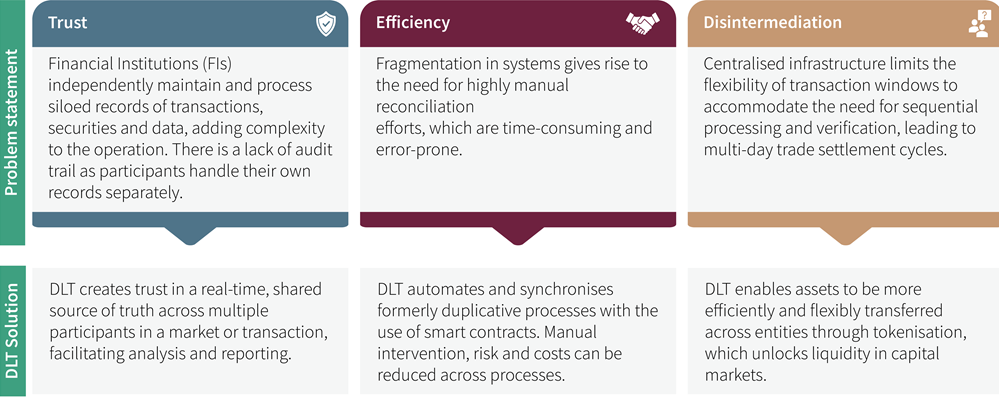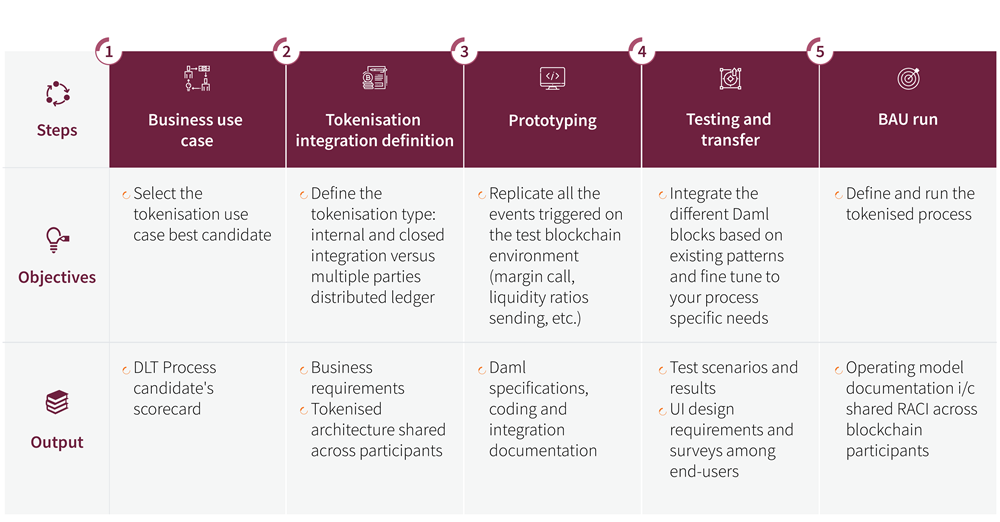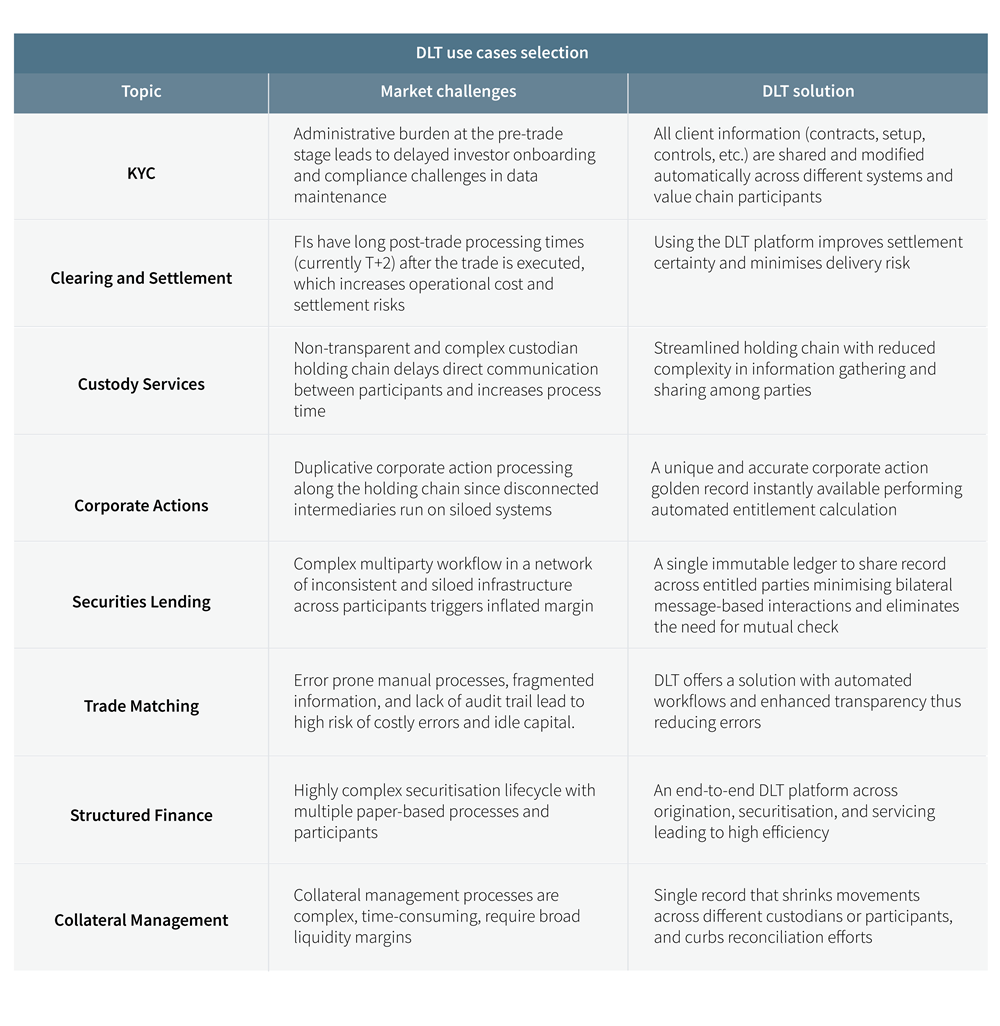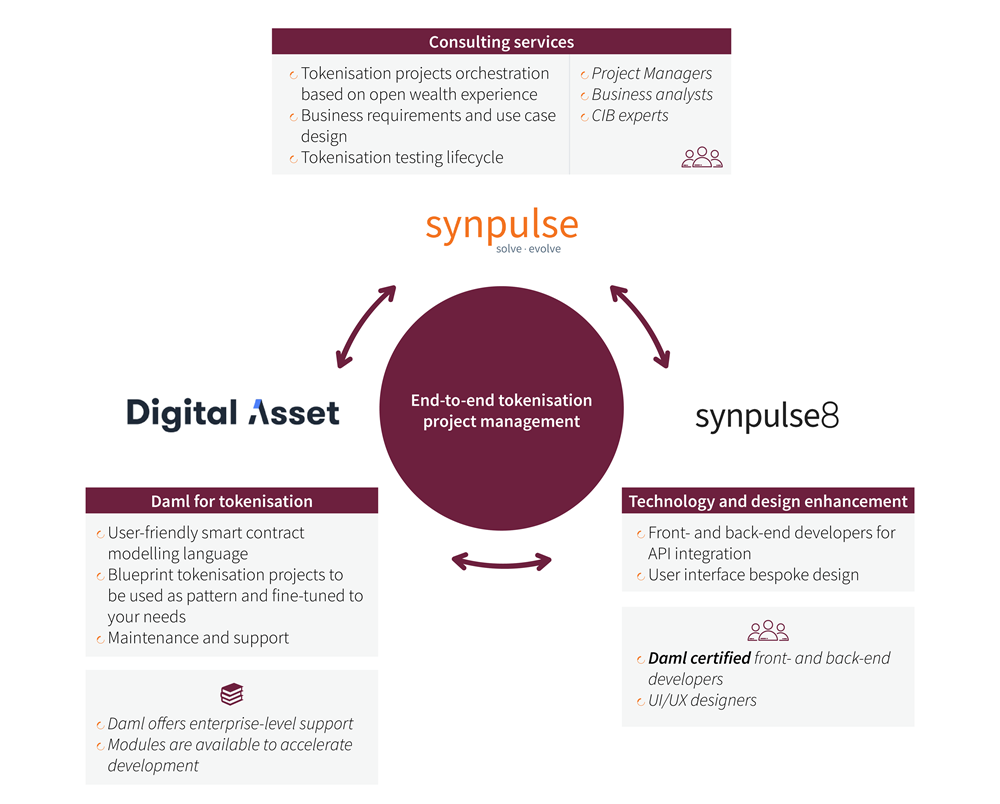In this article, we introduce our approach towards smart contracts implementation, which is underpinned by our partnership with technology firm Digital Asset. We also explore some use cases of DLT and how it can impact your strategy.
Distributed Ledger Technology (DLT) has gone through several disruptions. If you are unfamiliar with DLT, you may have heard of blockchain, its widely known derivate. Amongst the touted benefits are transaction trustfulness, process automation, and decision power disintermediation. It is no wonder that recent market and institutional initiatives seek to leverage this technology via smart contract proof of concepts.
Benefits of DLT for capital markets
In a nutshell, DLT establishes and maintains a single version of the truth that is shared amongst participants. It enhances capital market efficiency by reducing the number and complexity of reconciliations, manual interventions, and data processing steps.

How do smart contracts work?
DLT allows for the automatic enforcement of pre-programmed rules or contracts when pre-defined conditions occur. This results in risk reduction, cost savings, and enhanced efficiencies.

The recommended implementation approach
An end-to-end approach is recommended to help your organisation select, design, and run smart contracts. This can be done on one of the several business-as-usual (BAU) processes within the organisation.

Where do you implement DLT?
Smart contracts can be set up for quite a variety of businesses and along the full trade lifecycle.

Synpulse and Digital Asset
The partnership across Digital Asset, Synpulse, and Synpulse8 underpins end-to-end tokenisation projects and proofs of concepts.
Through our extensive project experience and strategic partnerships with DLT players, Synpulse and Synpulse8 have developed an overall understanding and insight into DLT matters. Our experienced and Daml language-certified business consultants, testers, and software engineers have built an in-depth understanding of, and experience with, DLT to support your DLT transformation journey – from roadmap planning to implementation scaling and training.
Synpulse offers differentiated services around DLT in the following areas:
- DLT candidates review. Select use cases for smart contract POC depending on the complexity and expected benefits.
- Network design. Define the type of blockchain the smart contract is set up on and participants to the platform.
- End-to-end product lifecyle management. Propose a comprehensive setup team from Synpulse and Synpulse8 to run in both project management, business analysis, coding, testing, and BAU run.

